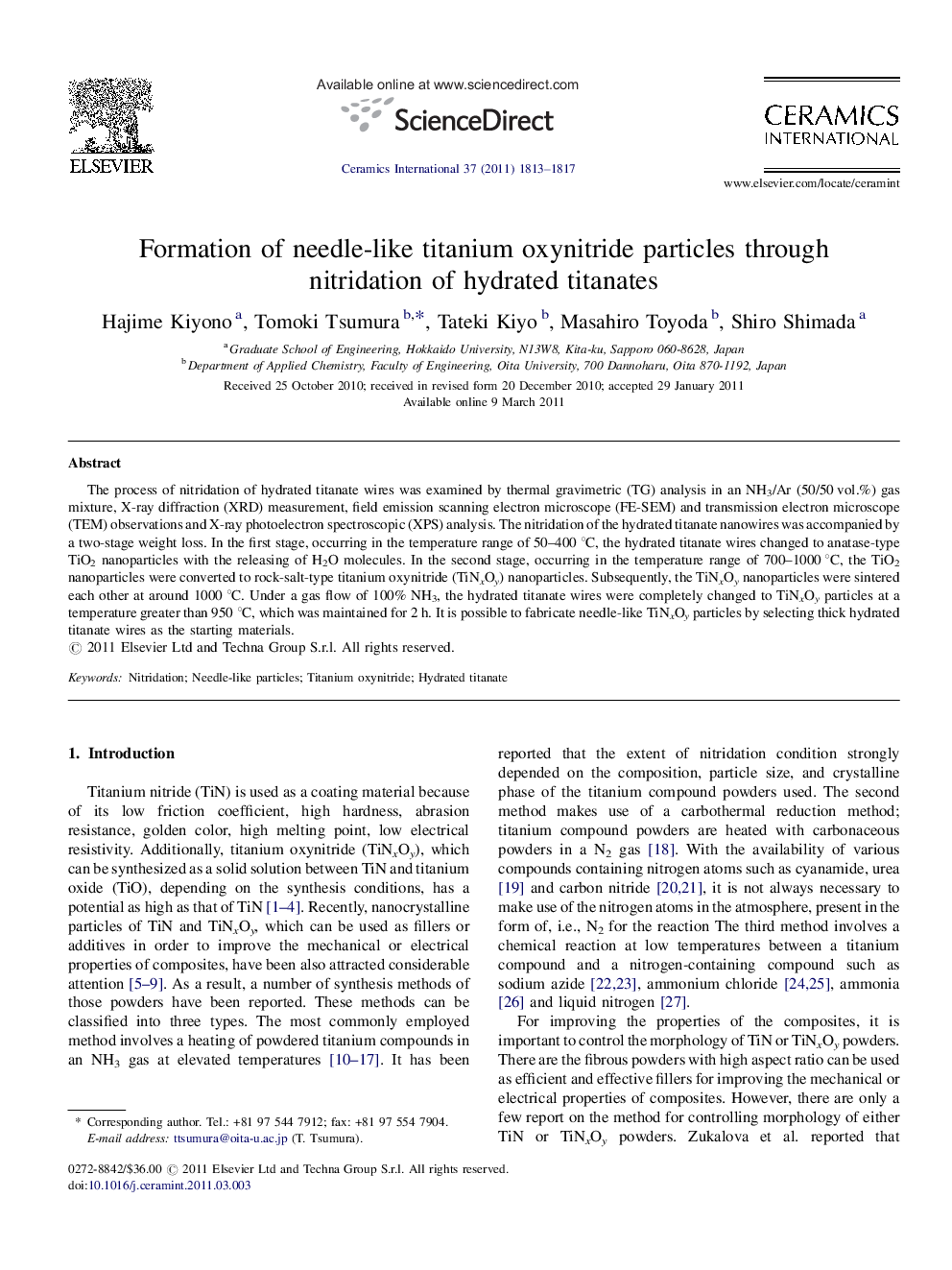| Article ID | Journal | Published Year | Pages | File Type |
|---|---|---|---|---|
| 1464479 | Ceramics International | 2011 | 5 Pages |
The process of nitridation of hydrated titanate wires was examined by thermal gravimetric (TG) analysis in an NH3/Ar (50/50 vol.%) gas mixture, X-ray diffraction (XRD) measurement, field emission scanning electron microscope (FE-SEM) and transmission electron microscope (TEM) observations and X-ray photoelectron spectroscopic (XPS) analysis. The nitridation of the hydrated titanate nanowires was accompanied by a two-stage weight loss. In the first stage, occurring in the temperature range of 50–400 °C, the hydrated titanate wires changed to anatase-type TiO2 nanoparticles with the releasing of H2O molecules. In the second stage, occurring in the temperature range of 700–1000 °C, the TiO2 nanoparticles were converted to rock-salt-type titanium oxynitride (TiNxOy) nanoparticles. Subsequently, the TiNxOy nanoparticles were sintered each other at around 1000 °C. Under a gas flow of 100% NH3, the hydrated titanate wires were completely changed to TiNxOy particles at a temperature greater than 950 °C, which was maintained for 2 h. It is possible to fabricate needle-like TiNxOy particles by selecting thick hydrated titanate wires as the starting materials.
